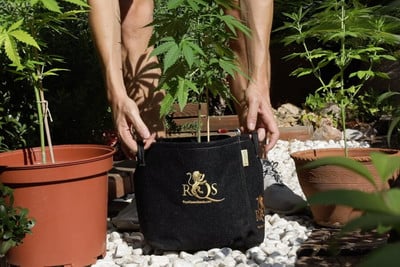.

Cannabis Microgreens: What They Are and How to Grow Them
Cannabis microgreens offer a whole new way to consume marijuana. They won't get you high, but these tiny vegetables are packed with minerals, flavonoids, and trace levels of cannabinoid acids. They're easy to grow at home and ready to harvest just a couple weeks after sowing. Plus, they go down great as a garnish or an ingredient in smoothies.
Contents:
You know cannabis as a psychoactive herb. But have you ever considered its potential as a leafy green vegetable? Microgreens are skyrocketing in popularity as nutrient-dense vegetables, and cannabinoid microgreens, in particular, are rich in unique compounds. Discover their benefits and how to grow them below.
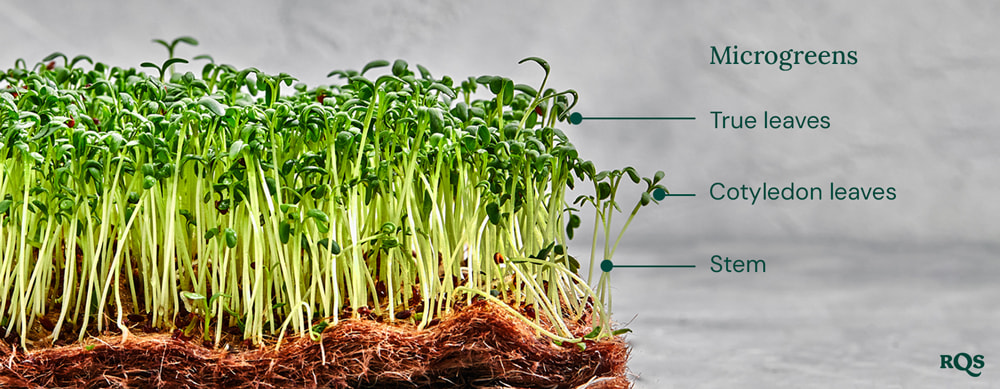
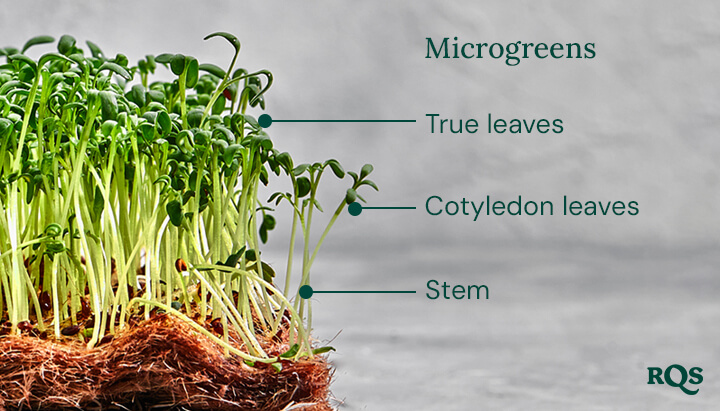
Microgreens: A Definition
Microgreens are essentially seedlings. They differ from other stages of plant development based on harvest time—they’re older than sprouts, a product harvested just days following germination, yet younger than baby greens, which possess more true leaves and are harvested around four weeks after germination. By definition, microgreens stand at between 2–7cm and feature three main components: a stem, a set of cotyledon leaves, and a set of first true leaves. Many different types of vegetables are grown as microgreens, with cabbage, broccoli, sunflowers, and peas being some of the most popular options.
These small plants have exploded in popularity in recent years. For growers, they require minimal space and inputs. For consumers, they offer superior health benefits compared to mature vegetables.
The Benefits of Microgreens
Studies[1] show that many microgreen species offer much greater quantities of beneficial bioactive molecules than their mature counterparts. For example, cilantro microgreens possess three times the beta-carotene content of older plants, while red cabbage microgreens contain 28-fold the amount of lutein and zeaxanthin—two plant pigments that protect eye health—than mature plants. On top of this, many types of microgreens offer more minerals than mature plants, including higher concentrations of magnesium and zinc.
Not only are microgreens more dense in nutrients, but they’re much more efficient to grow than mature vegetable plants. They require a fraction of the water, don’t require chemical pesticides and fertilisers, and are ready to harvest much sooner.
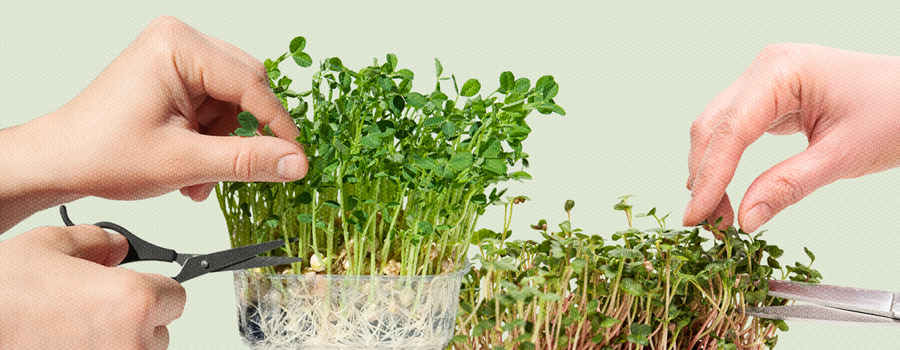
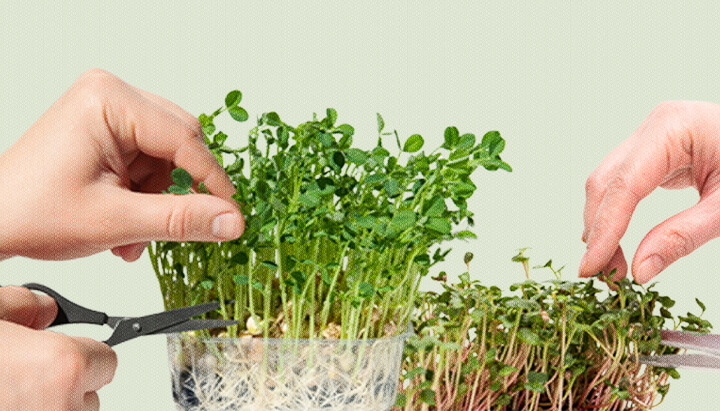
Cannabis Microgreens: Weed as a Salad Ingredient
With both cannabis and microgreen cultivation growing in popularity, it makes perfect sense for these two worlds to collide. In legal states, growers are cultivating marijuana microgreens as a form of dietary cannabis. Most cannabis microgreens are grown using hemp seeds, as they are much cheaper to purchase in bulk than commercial cannabis seeds sold for flower cultivation.
As cannabis microgreens become more popular, it’s possible that the perception of cannabis as a vegetable could change in the eyes of many. Because raw cannabis isn’t psychoactive and its leaves are essentially a leafy green not dissimilar to kale and spinach, weed could have valid culinary uses, first as a novelty and later as a staple.
The Potential Benefits of Weed Microgreens
Much like other microgreens, cannabis microgreens offer high levels of minerals[2] and beneficial phytochemicals. However, they also produce unique chemicals that make them stand out from other greens. If you take a close look at a weed microgreen, you’ll notice a shiny coating on its cotyledons and true leaves. This is made up of glandular trichomes—the same structures that produce cannabinoids and terpenes on mature cannabis plants. Research shows that marijuana microgreens produce a total cannabinoid content of around 1%, consisting of cannabinoid acids such as THCA, CBDA, and CBGA. Researchers are still figuring out how these compounds influence the human body, but they likely target the expanded endocannabinoid system—a signalling network that impacts manifold aspects of human physiology.
Cannabinoids aside, cannabis microgreens also produce flavonoids that are unique to the marijuana plant. Known as cannflavins, early research shows that these compounds may have significant wellness potential[3].
Will Cannabis Microgreens Get You High?
Tossing cannabis microgreens onto a salad or into a smoothie won’t get you high. Sure, they contain trace levels of THCA—the chemical precursor to THC—however, THCA is not intoxicating. You can eat a hearty portion of weed microgreens without experiencing any altered state of consciousness.
How to Grow Cannabis Microgreens
Cannabis microgreens are exceptionally easy to grow at home using hemp seeds. With a small amount of soil and a cultivation tray, you can expect a large quantity of fresh microgreens within 2 weeks of germination. Check out what you’ll need to secure a harvest below.
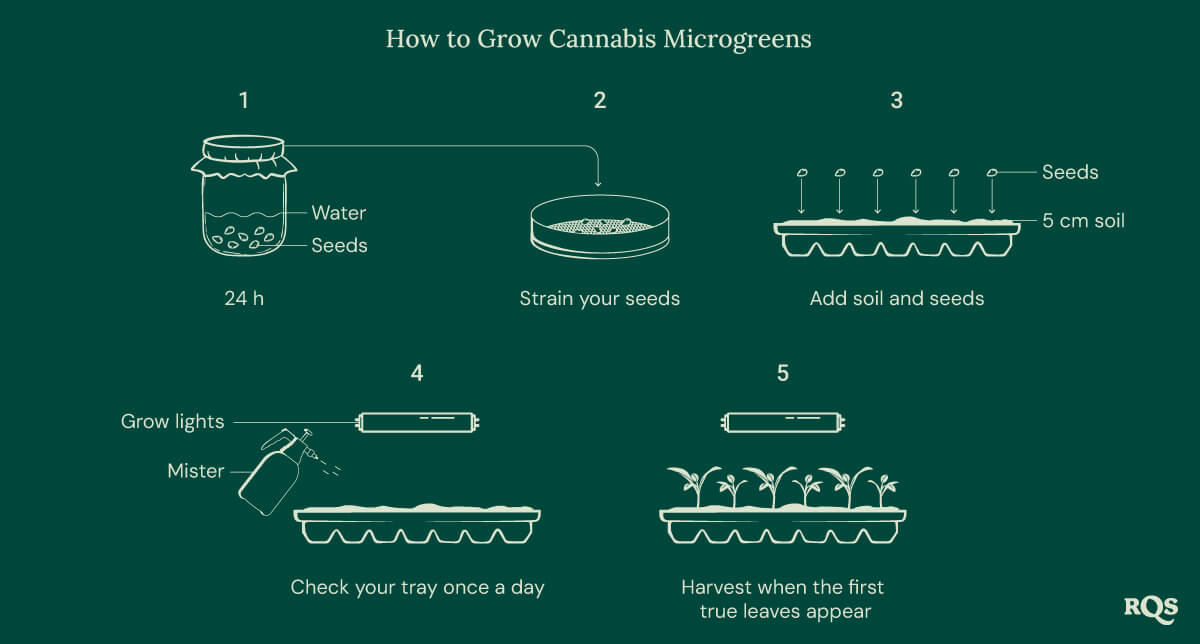
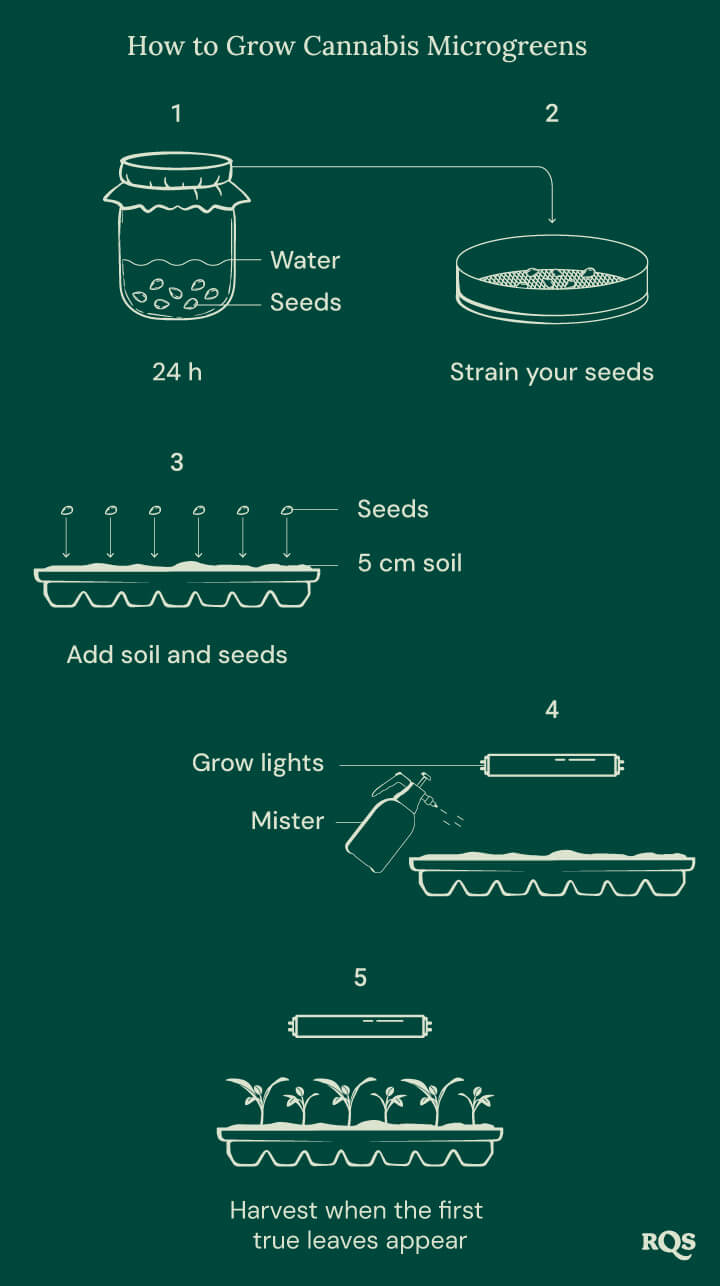
Equipment
- Non-sterilised hemp seeds
- Bowl or jar
- Sieve
- Seed tray with drainage holes
- Collection tray
- Soil
- Mister
Directions
- Microgreen production typically uses standardised flats for trays, so you'll want enough hemp seeds to spread evenly across your seed tray.
- Once you know how many seeds you need, place them into a bowl or jar. Cover them with water and let them soak for 24 hours before straining them using a sieve.
- Fill your seed tray with soil to a depth of around 5cm. Scatter your seeds across the growing medium as evenly as possible. Gently press them down with the back of your hand. Use your mister to give the growing medium a good soak. Place your tray on top of a collection tray to capture any runoff.
- Place the seed tray under grow lights or into a greenhouse outdoors. Avoid placing your tray outdoors, as birds, mice, and other animals will happily help themselves to the seeds. Check your tray once a day and give it another mist only if the soil appears dry.
- Within a matter of days, the seeds will sprout. Harvest your microgreens when they’ve developed their first set of true leaves (usually within 14 days[4] after germination). Use a pair of scissors to cut them just above the surface of the soil.
How to Use Cannabis Microgreens
Now that you have a stash of cannabis microgreens, it’s time to put them to use! Discover the best ways to consume them below.
- Use Weed Microgreens as a Garnish
- You can use hemp microgreens as a garnish on just about any savoury dish, from soup and pasta to salad bowls and pizzas. These small plants have a powerful bitter taste when eaten alone. However, this taste fades into the background when paired with other food. Simply sprinkle a handful onto a dish of your choice and enjoy high concentrations of minerals and other phytochemicals with every bite.
- Add Weed Microgreens to Smoothies
- Weed microgreens are an excellent way to add raw cannabis to smoothies. Simply include this functional food alongside any fruits and vegetables of your choice. Add another handful of hulled hemp seeds for omega fatty acids, and consider using blueberries and blackberries for their superb concentrations of antioxidants.
- Create Cannabis Microgreen Capsules
- You can also add cannabis microgreens to your supplement regimen. Use a dehydrator to dry them out, then use a pestle and mortar or food processor to turn them into a powder. Then, add them to capsules to make your own supplement containing cannabinoid acids, minerals, and flavonoids.
Cannabis Microgreens: Weed as a Leafy Green Vegetable
Cannabis microgreens have the potential to change the way the world sees weed. Alongside its use as a psychoactive substance, cannabis also serves as a leafy green vegetable packed with beneficial phytochemicals. As a microgreen, the plant provides even higher concentrations of essential minerals than mature plants. These small plants are easy to grow at home, take up next to no space, and provide a harvest in just a couple weeks. So, will you start adding these nutritional powerhouses to your diet?
- The Science behind Microgreens as an Exciting New Food for the 21st Century https://pubs.acs.org
- Hemp Microgreen Mineral Content, Cannabinoids, Total Phenolics, and Antioxidants - ProQuest https://www.proquest.com
- Biosynthesis of cannflavins A and B from Cannabis sativa L https://www.sciencedirect.com
- Guidance on required reporting and performance-based sampling for growers of micro-greens and hemp transplants https://www.agriculture.pa.gov






























